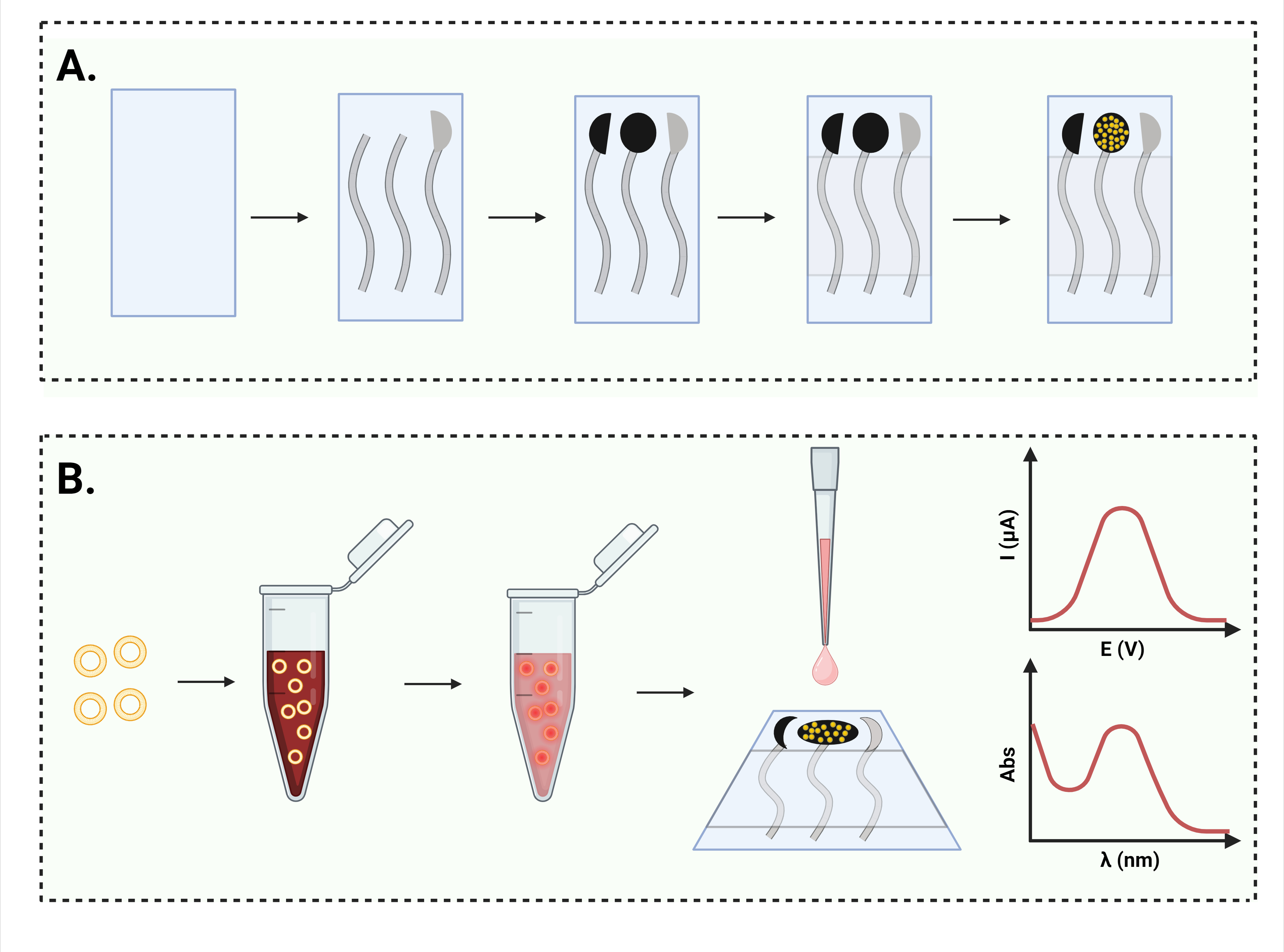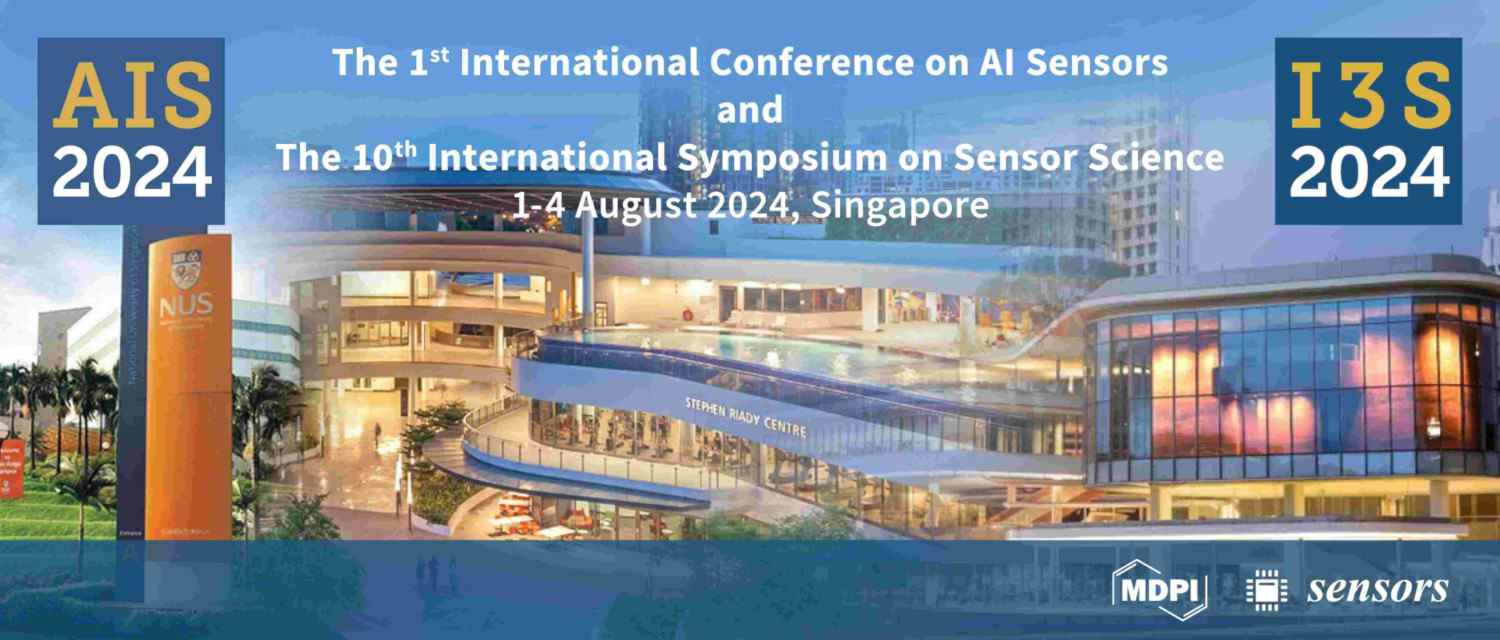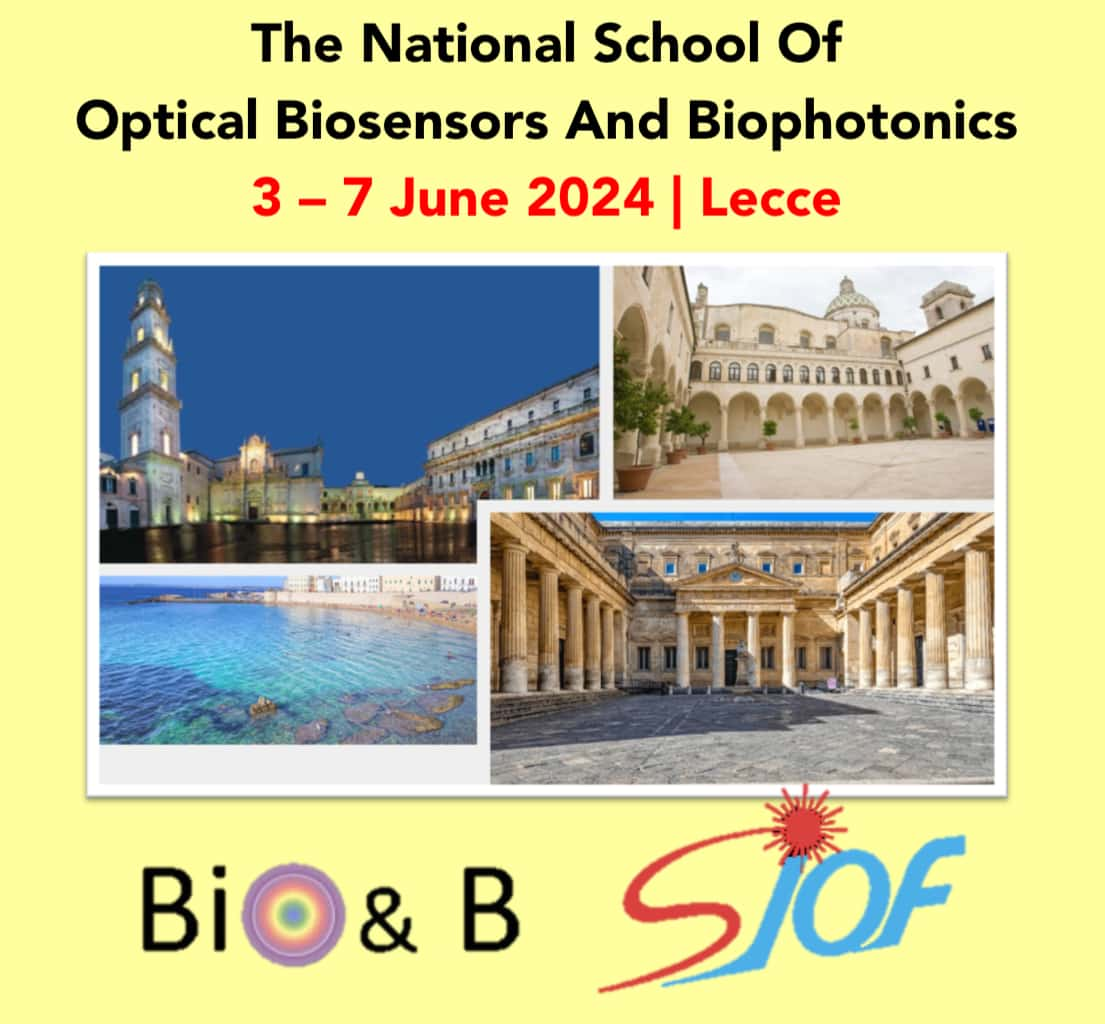-
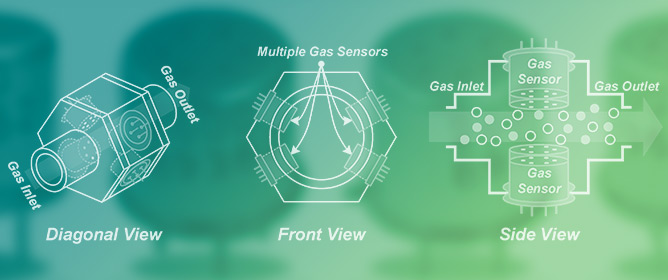 A Dynamic Range Preservation Readout Integrated Circuit for Multi-Gas Sensor Array Applications
A Dynamic Range Preservation Readout Integrated Circuit for Multi-Gas Sensor Array Applications -
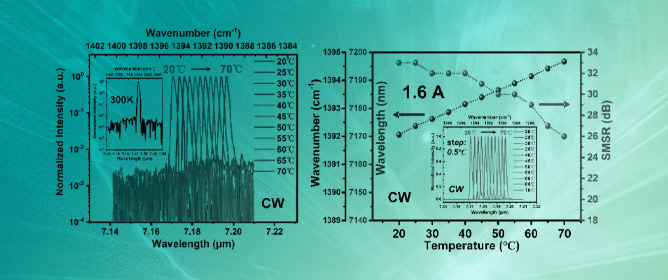 Wavelength-Stable Metal Grating Distributed Feedback Quantum Cascade Laser Emitting at λ ~ 7.2 μm
Wavelength-Stable Metal Grating Distributed Feedback Quantum Cascade Laser Emitting at λ ~ 7.2 μm -
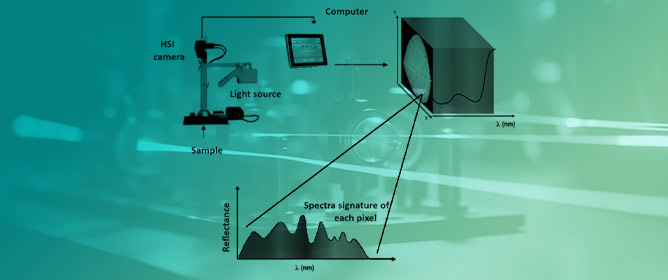 Spectroscopy Non-Destructive Sensory Analysis for Plant-Based Foods and Beverages
Spectroscopy Non-Destructive Sensory Analysis for Plant-Based Foods and Beverages -
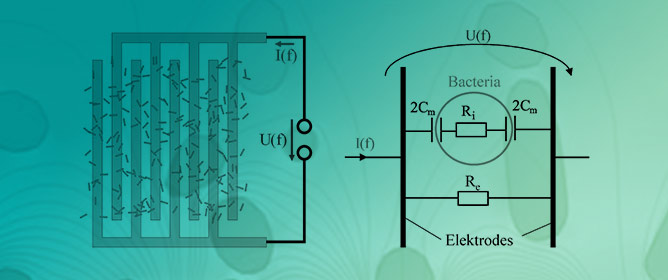 Simulation of Electrical Biofilm Impedance to Determine the Sensitivity of Electrode Geometries
Simulation of Electrical Biofilm Impedance to Determine the Sensitivity of Electrode Geometries
Journal Description
Chemosensors
Chemosensors
is an international, scientific, peer-reviewed, open access journal on the science and technology of chemical sensors and related analytical methods and systems, published monthly online by MDPI.
- Open Access— free for readers, with article processing charges (APC) paid by authors or their institutions.
- High Visibility: indexed within Scopus, SCIE (Web of Science), CAPlus / SciFinder, Inspec, and other databases.
- Journal Rank: JCR - Q1 (Instruments & Instrumentation) / CiteScore - Q2 (Analytical Chemistry)
- Rapid Publication: manuscripts are peer-reviewed and a first decision is provided to authors approximately 17.9 days after submission; acceptance to publication is undertaken in 2.8 days (median values for papers published in this journal in the second half of 2023).
- Recognition of Reviewers: reviewers who provide timely, thorough peer-review reports receive vouchers entitling them to a discount on the APC of their next publication in any MDPI journal, in appreciation of the work done.
Impact Factor:
4.2 (2022);
5-Year Impact Factor:
4.2 (2022)
Latest Articles
Electrochemical Sensor for the Evaluation of Doxorubicin from Novel Pharmaceutical Formulations and Serum
Chemosensors 2024, 12(4), 69; https://doi.org/10.3390/chemosensors12040069 - 19 Apr 2024
Abstract
This study focuses on addressing the challenges associated with doxorubicin (DOX), an anthracycline chemotherapeutic widely used in cancer treatment. Despite its efficacy, DOX is linked to severe side effects that limit its clinical applications. Novel pharmaceutical formulations aim to mitigate these issues, providing
[...] Read more.
This study focuses on addressing the challenges associated with doxorubicin (DOX), an anthracycline chemotherapeutic widely used in cancer treatment. Despite its efficacy, DOX is linked to severe side effects that limit its clinical applications. Novel pharmaceutical formulations aim to mitigate these issues, providing better safety profiles. The development of these formulations requires analytical methods that can accurately and quickly quantify DOX. A cost-effective and portable electrochemical sensor for DOX detection was developed utilizing in-house printed carbon electrodes decorated with gold nanoparticles. DOX was detected using differential pulse voltammetry. The sensor demonstrated an accurate quantification of DOX from novel pharmaceutical formulations and serum, presenting a dynamic range of 1 to 500 μg/mL and a low detection limit of 0.3 μg/mL. The method, successfully applied to characterize DOX-loaded nanosomes, offers a valuable alternative in the early stages of formulation development, reducing costs and saving time, while maintaining accuracy.
Full article
(This article belongs to the Special Issue Application of Carbon Nanotubes in Sensing)
►
Show Figures
Open AccessArticle
Rapid and Sensitive Detection of Influenza B Virus Employing Nanocomposite Spheres Based on Ag-Doped ZnIn2S4 Quantum Dots
by
Jia-Xuan Hu, Li-Bang Zhu, Sheng-Tong Wu and Shou-Nian Ding
Chemosensors 2024, 12(4), 68; https://doi.org/10.3390/chemosensors12040068 - 19 Apr 2024
Abstract
Lateral flow immunoassay (LFIA) technology serves a significant role as a simple and rapid biosensor in the detection of influenza viruses. The focus of this study is the development of a rapid and convenient screening method for influenza B virus (IBV) proteins using
[...] Read more.
Lateral flow immunoassay (LFIA) technology serves a significant role as a simple and rapid biosensor in the detection of influenza viruses. The focus of this study is the development of a rapid and convenient screening method for influenza B virus (IBV) proteins using a fluorescence lateral flow biosensor based on Ag-doped ZnIn2S4 quantum dots (Ag: ZIS QDs) as signal reporters. These Ag: ZIS QDs-emitting orange fluorescence are loaded onto dendritic mesoporous silica nanoparticles (DMSNs) and are further coated with a layer of silica shell to form a core–shell structured composite nanomaterial (SiO2 @ Ag: ZIS QDs @ DMSNs). The orange fluorescence effectively eliminates the interference of blue background fluorescence, significantly enhancing the detection sensitivity. This technology demonstrates outstanding performance in the immediate detection of IBV, with a minimum detection limit of 1 ng/mL, compared to the traditional colloidal gold strip with a detection limit of 6 ng/mL. Furthermore, both intra-assay and inter-assay coefficients of variation (CV) are less than 9%. This method holds promise for wide application in early diagnosis, epidemiological investigation, and epidemic surveillance of IBV.
Full article
(This article belongs to the Special Issue Rapid Point-of-Care Testing Technology and Application)
►▼
Show Figures

Figure 1
Open AccessArticle
High Sensitivity Hydrogen Sensor via the Coupling of Tamm Plasmon Polaritons and Defect Mode
by
Feng Zhang, Weifeng Yin and Jianxia Zhang
Chemosensors 2024, 12(4), 67; https://doi.org/10.3390/chemosensors12040067 - 18 Apr 2024
Abstract
Optical hydrogen sensors offer high sensitivity, high accuracy, and non-invasive sensing capabilities, making them promising devices in various fields, including the construction of hydrogen fuel cells, storage and transportation, and aerospace. However, to achieve better sensitivity and faster reaction times, such sensors are
[...] Read more.
Optical hydrogen sensors offer high sensitivity, high accuracy, and non-invasive sensing capabilities, making them promising devices in various fields, including the construction of hydrogen fuel cells, storage and transportation, and aerospace. However, to achieve better sensitivity and faster reaction times, such sensors are often constructed as nano-arrays or nano-gratings, leading to increased manufacturing costs and complexity. In this study, we propose and demonstrate a highly sensitive hydrogen sensor based on a multilayer structure. The proposed structure consists of a Pd metal film and a photonic crystal with a defect layer, in which the photonic crystal is designed by an alternating arrangement of Ta2O5 and SiO2, and the material comprising the defect layer is SiO2. With a sensitivity of up to 16,020 at 670 nm, the proposed sensor relies on the coupling of Tamm plasmon polaritons and defect modes. The electric field distribution inside the structure is also provided in order to reveal its physical mechanism. Furthermore, we investigate the effects of the thickness of the defect layer and the angle of incident light on the sensor’s performance. The study results show that the sensor has good fault tolerance in either scenario. The findings of this study open up new possibilities for hydrogen sensor applications.
Full article
(This article belongs to the Section Nanostructures for Chemical Sensing)
►▼
Show Figures
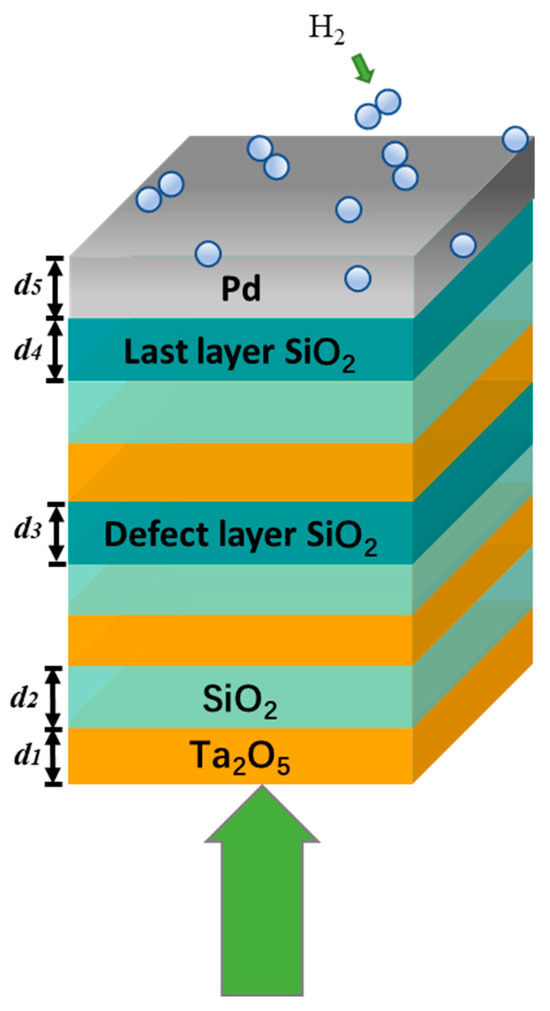
Figure 1
Open AccessArticle
AuNPs/Ti3C2 Signal-Enhanced Surface Plasmon Resonance Imaging Biosensor for Ultrasensitive Detection of miRNA
by
Yirui Qin, Li Jiang, Rengang Sun, Yunzhu Fang, Boya Shi and Shangzhong Jin
Chemosensors 2024, 12(4), 66; https://doi.org/10.3390/chemosensors12040066 - 17 Apr 2024
Abstract
MicroRNA-21 is a potential cancer biomarker that is highly expressed in many cancer cells. Therefore, it is important to perform highly sensitive detection of miRNA-21. In this study, we designed a surface plasmon resonance imaging (SPRi) sensor based on an AuNPs/Ti3C
[...] Read more.
MicroRNA-21 is a potential cancer biomarker that is highly expressed in many cancer cells. Therefore, it is important to perform highly sensitive detection of miRNA-21. In this study, we designed a surface plasmon resonance imaging (SPRi) sensor based on an AuNPs/Ti3C2 composite for real-time and highly sensitive detection of miRNA-21. The fixation of the capture polyA-DNA probes was completed by the freezing method, which improved the detection efficiency. DNA−AuNPs/Ti3C2 conjugates were added to amplify the SPRi signal. The signal amplification combines the large specific surface area of Ti3C2 and the electronic coupling between the local surface plasmon resonance (LSPR) of AuNPs and the plasmon wave on the surface of the Au chip, thereby enhancing the SPRi response signal. Using this sensing strategy, the detection limit for miRNA-21 can reach 6.13 fM, with a wide dynamic range between 10 fM and 10 nM. In addition, the sensor has excellent selectivity for miRNA-21 and miRNAs with similar sequences, and receives minimal interference when applied to complex matrices. Based on these results, we believe that this study provides a simple and highly sensitive method for miRNA detection, which has great potential for the quantitative detection of miRNA in biomedical research and early clinical diagnosis.
Full article
(This article belongs to the Special Issue Advanced Surface Plasmon Resonance Sensors)
►▼
Show Figures
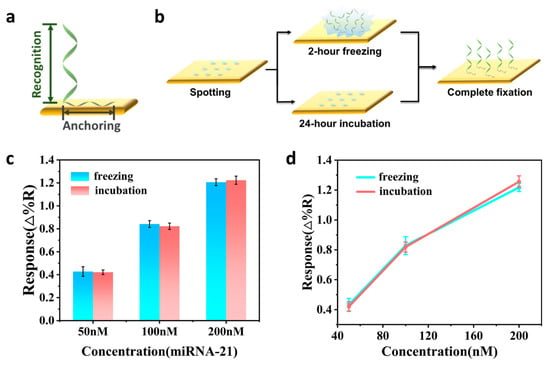
Figure 1
Open AccessArticle
Study of the Gas Sensing Performance of Ni-Doped Perovskite-Structured LaFeO3 Nanospheres
by
Fanli Meng, Zhenhua Yu, Renze Zhang, Hongliang Gao and Zhenyu Yuan
Chemosensors 2024, 12(4), 65; https://doi.org/10.3390/chemosensors12040065 - 16 Apr 2024
Abstract
This study synthesizes Ni-doped perovskite-structured LaFeO3 composite materials via a one-step hydrothermal method, characterizes the morphology and structure of the materials, and tests their gas sensing performance. The test results show that compared to pure LaFeO3 material, the gas sensing performance
[...] Read more.
This study synthesizes Ni-doped perovskite-structured LaFeO3 composite materials via a one-step hydrothermal method, characterizes the morphology and structure of the materials, and tests their gas sensing performance. The test results show that compared to pure LaFeO3 material, the gas sensing performance of Ni-doped LaFeO3 material is improved in all aspects. Specifically, LFO-Ni2% exhibits a response as high as 102 towards 100 ppm of triethylamine at 190 °C, along with better selectivity and stability. Furthermore, the gas sensing mechanism is investigated. On one hand, doping with an appropriate proportion of Ni can lead to the formation of more-complete and smaller-sized microsphere structures with pores. This is beneficial for the adsorption of oxygen from the air onto the material surface, as well as for the diffusion of the target gas to the surface of the material, thereby enhancing gas sensitivity performance. On the other hand, the doped Ni enters the interior of the LaFeO3 crystal, replacing some of the cations in LaFeO3, increasing the concentration of charge carriers in the material, and reducing the material’s resistance. The sample can adsorb more oxygen, promoting the reaction between adsorbed oxygen and the target gas, and thereby improving the gas sensitivity performance of the sample.
Full article
(This article belongs to the Special Issue Functional Nanomaterial-Based Gas Sensors)
►▼
Show Figures

Figure 1
Open AccessArticle
A New X-ray Diffraction Spectrum-Based Untargeted Strategy for Accurately Identifying Ancient Painted Pottery from Various Dynasties and Locations in China
by
Jing-Jing Song, Yang-Yang Wang, Wen-Cheng Tong, Feng-Lian Ma, Jia-Nan Wang and Yong-Jie Yu
Chemosensors 2024, 12(4), 64; https://doi.org/10.3390/chemosensors12040064 - 15 Apr 2024
Abstract
X-ray diffraction (XRD) is extensively used in archaeometric investigation. Herein, we provide a novel XRD spectrum-based untargeted strategy for the classification of ancient painted pottery for various dynasties. It was accomplished using the original spectrum without a phase identification. To eliminate the influence
[...] Read more.
X-ray diffraction (XRD) is extensively used in archaeometric investigation. Herein, we provide a novel XRD spectrum-based untargeted strategy for the classification of ancient painted pottery for various dynasties. It was accomplished using the original spectrum without a phase identification. To eliminate the influence of baseline drift, a new baseline drift correction algorithm was specifically designed for XRD spectra. The algorithm was implemented using local minimum values in the analyzed signal in an iterative optimization manner. The results indicated that with the aid of the algorithm, the baseline drift problem can be successfully resolved, and the classification of ancient painted pottery can be greatly improved. Finally, the developed strategy was successfully used to discriminate ancient painted pottery from the Han and Tang dynasties in the cities of Guyuan and Zhongwei, China. The developed untargeted strategy had the remarkable advantage of almost automatic data analysis. The toolbox of our strategy can be obtained from the authors.
Full article
(This article belongs to the Special Issue Chemometrics for Analytical Chemistry: Second Edition)
►▼
Show Figures
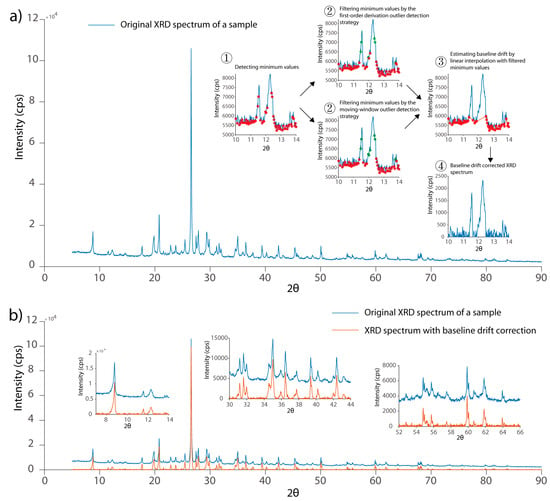
Figure 1
Open AccessArticle
Gold Nanoparticles in Porous Silicon Nanotubes for Glucose Detection
by
Roberto Gonzalez-Rodriguez, Evan Hathaway, Jeffery L. Coffer, Roxana M. del Castillo, Yuankun Lin and Jingbiao Cui
Chemosensors 2024, 12(4), 63; https://doi.org/10.3390/chemosensors12040063 - 15 Apr 2024
Abstract
Silicon nanotubes (Si NTs) have a unique structure among the silicon nanostructure family, which is useful for diverse applications ranging from therapeutics to lithium storage/recycling. Their well-defined structure and high surface area make them ideal for sensing applications. In this work, we demonstrate
[...] Read more.
Silicon nanotubes (Si NTs) have a unique structure among the silicon nanostructure family, which is useful for diverse applications ranging from therapeutics to lithium storage/recycling. Their well-defined structure and high surface area make them ideal for sensing applications. In this work, we demonstrate the formation of Au nanoparticles (NPs) functionalized with 4-Mercaptophenylboronic acid (MPBA) on porous Si NTs (pSi NTs) fabricated using ZnO nanowires as a template. The system was characterized, and the proposed structure was confirmed using scanning electron microscopy (SEM), transmission electron microscopy (TEM), and X-ray photoelectron spectroscopy (XPS). Varying glucose concentrations in phosphate-buffered saline (PBS) (0.5–80 mM) were introduced to the Si NT nanocomposite system. The glucose is detectable at low concentrations utilizing surface-enhanced Raman spectroscopy (SERS), which shows a concentration-dependent peak shift in the benzene ring breathing mode (~1071 cm−1) of MPBA. Complementing these measurements are simulations of the Raman hot spots associated with plasmonic enhancement of the Au NPs using COMSOL. This biocompatible system is envisioned to have applications in nanomedicine and microfluidic devices for real-time, non-invasive glucose sensing.
Full article
(This article belongs to the Special Issue Chemical Sensors Based on Low-Dimensional Semiconductors)
►▼
Show Figures
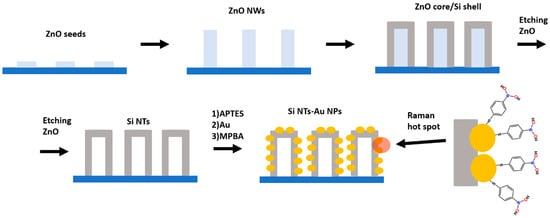
Figure 1
Open AccessArticle
Novel Photoluminescence and Optical Thermometry of Solvothermally Derived Tetragonal ZrO2:Ti4+,Eu3+ Nanocrystals
by
Lu Li, Xuesong Qu, Guo-Hui Pan and Jung Hyun Jeong
Chemosensors 2024, 12(4), 62; https://doi.org/10.3390/chemosensors12040062 - 15 Apr 2024
Abstract
In this paper, we report on the solvothermal preparation and detailed characterization of pristine and intentionally doped zirconium dioxide (ZrO2) nanocrystals (NCs, ~5 nm) with Eu3+ or Ti4+/Eu3+ ions using alkoxide precursors. The results indicated that the
[...] Read more.
In this paper, we report on the solvothermal preparation and detailed characterization of pristine and intentionally doped zirconium dioxide (ZrO2) nanocrystals (NCs, ~5 nm) with Eu3+ or Ti4+/Eu3+ ions using alkoxide precursors. The results indicated that the ZrO2 NCs were dominantly of a tetragonal phase (t-ZrO2) with a small proportion of monoclinic ZrO2 (m-ZrO2). The high purity of t-ZrO2 NCs could be synthesized with more Eu3+ doping. It was found that the as-obtained ZrO2 NCs contain some naturally present Ti4+ ions originating from precursors, but were being overlooked commonly, and some carbon impurities produced during synthesis. These species showed distinct photoluminescence (PL) properties. At least two types of Eu3+, located at low- and high-symmetry sites (probably sevenfold and eightfold oxygen coordination), respectively, were demonstrated to build into the lattice structure of t-ZrO2 NCs together. The cationic dopants were illustrated to be distributed non-randomly over the sites normally occupied by Zr, while Ti impurities preferentially occupied the sites near the low-symmetry site of Eu3+, yielding efficient energy transfer from the titanate groups to the neighboring Eu3+. Luminescence nanothermometry could measure temperature in a non-contact and remote way and could find great potentials in micro/nano-electronics, integrated photonics, and biomedicine. On the basis of the dual-emitting combination strategy involving the white broadband CT (Ti3+→O−) emissions of the titanate groups and red sharp Eu3+ emissions, t-ZrO2:Eu3+ nanophosphors were demonstrated to be ratiometric self-referencing optical thermometric materials, with a working range of 130–230 K and a maxima of relative sensitivity of ~1.9% K−1 at 230 K.
Full article
(This article belongs to the Section Optical Chemical Sensors)
►▼
Show Figures
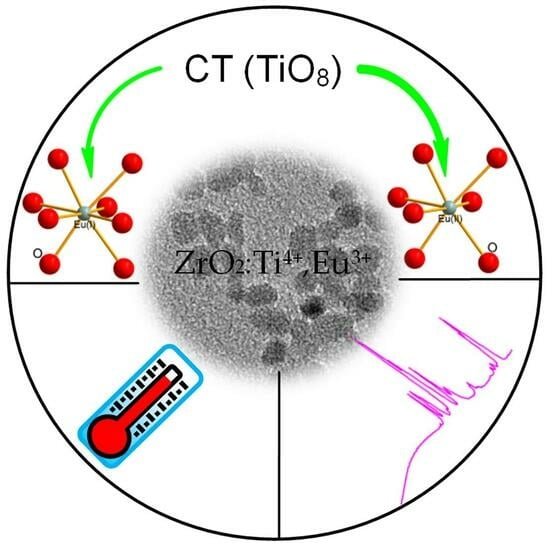
Graphical abstract
Open AccessReview
Ultrahigh-Sensitivity Detection of 17β-Estradiol
by
Joo Seon Seok and Heongkyu Ju
Chemosensors 2024, 12(4), 61; https://doi.org/10.3390/chemosensors12040061 - 10 Apr 2024
Abstract
17β-estradiol (E2), a vital female sex hormone, plays a crucial role in female reproductive cycles and secondary sexual characteristics. The quantification of E2 concentration in human blood and urine samples is essential because a deviation from physiological levels of E2 indicates the development
[...] Read more.
17β-estradiol (E2), a vital female sex hormone, plays a crucial role in female reproductive cycles and secondary sexual characteristics. The quantification of E2 concentration in human blood and urine samples is essential because a deviation from physiological levels of E2 indicates the development of diseases and abnormalities such as precocious puberty, breast cancer, weight gain, abnormal menstruation, osteoporosis, and infertility. In addition, the detection of E2 in food and the environment has gained widespread interest because of its role as an endocrine disruptor (environmental hormone) that can perturb physiological processes. E2 is used as a drug for hormone therapy. Various E2 detection technologies for diagnosing relevant human diseases, drug screening, and environmental monitoring have been demonstrated in studies. In this article, we have reviewed technological strategies developed for E2 detection with ultrahigh sensitivity, with a limit of detection comparable to several pg/mL or lower. We observed that gold nanoparticles (AuNPs) were used as nanoplatforms for signal amplification, which enabled ultrahigh sensitivity in most studies. Signal amplification was facilitated by AuNP characteristics such as the versatility of surface biochemistry, exceedingly large surface-to-volume ratio, surface plasmonic activity, luminescence quenching ability, and biocompatibility. These techniques have been used to detect E2 in food, water, human serum, and urine with ultrahigh sensitivity. We summarize the working principles of E2 detection strategies that allow ultrahigh sensitivity and provide an approach for future work required for the elucidation of practical applications of these technologies.
Full article
(This article belongs to the Section Materials for Chemical Sensing)
►▼
Show Figures
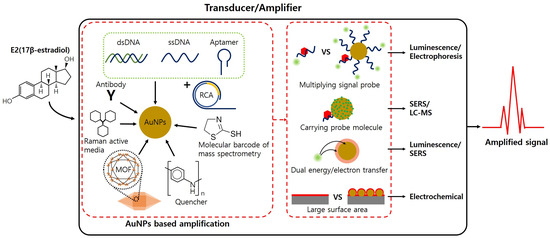
Figure 1
Open AccessArticle
A Dynamic Range Preservation Readout Integrated Circuit for Multi-Gas Sensor Array Applications
by
Soon-Kyu Kwon and Hyeon-June Kim
Chemosensors 2024, 12(4), 60; https://doi.org/10.3390/chemosensors12040060 - 09 Apr 2024
Abstract
This study introduces a readout integrated circuit (ROIC) tailored for multi-gas sensor arrays featuring a proposed baseline calibration scheme aimed at mitigating the issue of sensor baseline variation. Unlike previous approaches, the proposed scheme stores each sensor’s baseline value and dynamically updates the
[...] Read more.
This study introduces a readout integrated circuit (ROIC) tailored for multi-gas sensor arrays featuring a proposed baseline calibration scheme aimed at mitigating the issue of sensor baseline variation. Unlike previous approaches, the proposed scheme stores each sensor’s baseline value and dynamically updates the signal extraction range accordingly during ROIC operation. This adjustment allows for the optimal use of the ROIC’s dynamic range, enhancing sensor uniformity and accuracy without the need for complex additional circuitry or advanced post-processing algorithms. We fabricated a prototype ROIC using a 180 nm CMOS process, achieving a low power consumption of 0.43 mW and a conversion rate of 50 kSPS. The prototype boasts an integrated noise level of 9.9 μVRMS across a frequency range of 0.1 Hz to 5 kHz and a dynamic range of 142.6 dB, coupled with superior linearity, indicated by a maximum integral non-linearity (INL) of −75.71 dB. This design significantly reduces sensor offset scattering to within 1 LSB of the A/D reference scale. In this study, the efficacy of the proposed scheme was validated using Figaro TGS-2600. The ROIC targets a sensitivity range from 0.54 to 0.23 for gas concentrations ranging from 5 ppm to 20 ppm and a resolution of 39 Ω for sensor resistance range from 10 kΩ to 90 kΩ. The enhancements in performance make the proposed ROIC a promising solution for precise gas concentration detection in sensor applications.
Full article
(This article belongs to the Section Electrochemical Devices and Sensors)
►▼
Show Figures

Figure 1
Open AccessReview
Aptasensors for the Detection of Environmental Contaminants of High Concern in Water Bodies: A Systematic Review
by
Eduardo Canek Reynoso, Patrick Severin Sfragano, Mario González-Perea, Ilaria Palchetti and Eduardo Torres
Chemosensors 2024, 12(4), 59; https://doi.org/10.3390/chemosensors12040059 - 09 Apr 2024
Abstract
With the advancement of technology and increasing industrial activity, anthropogenic contaminants are currently detected where there is no record of their presence or insufficient information about their toxicological impact. Consequently, there are not sufficiently robust local or global regulations, the ecotoxicological and human
[...] Read more.
With the advancement of technology and increasing industrial activity, anthropogenic contaminants are currently detected where there is no record of their presence or insufficient information about their toxicological impact. Consequently, there are not sufficiently robust local or global regulations, the ecotoxicological and human health risks are critical, and they may not be routinely monitored despite being ubiquitous. The interest in studying environmental contaminants, including micropollutants and emerging contaminants, in complex environmental water samples has grown in the last decade. Due to the concentrations in which they are typically found in the environment and the rapid global dispersion, the detection procedures for these substances must be capable of measuring very low concentrations. Many efforts have been made to improve remediation procedures or develop novel analytical methods for their determination. Although there are several robust and reliable standard analytical techniques for their monitoring, pollutant contamination requires simple and inexpensive methods for massive, in situ monitoring campaigns. In this regard, biosensors have emerged as devices with high selectivity, sensitivity, easy operation, and short analysis times. Aptasensors are biosensors based on a nucleic acid recognition element (aptamer). Due to their synthetic nature, stability, and easy production, aptamers are frequently employed to develop bioassays. This work presents a systematic review of the trends in using aptasensors for detecting environmental contaminants present in environmental water samples, as well as the estimation of the potential technological contribution these devices might give to environmental monitoring.
Full article
(This article belongs to the Special Issue Chemical Sensors and Analytical Methods for Environmental Monitoring)
►▼
Show Figures
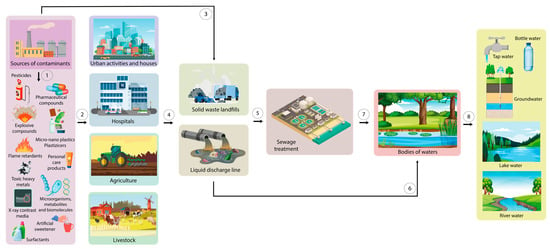
Figure 1
Open AccessReview
Electrochemical Sensors, Biosensors, and Optical Sensors for the Detection of Opioids and Their Analogs: Pharmaceutical, Clinical, and Forensic Applications
by
Sayo O. Fakayode, Pamela Nicole Brady, Cidya Grant, Vivian Fernand Narcisse, Peter Rosado Flores, Catrena Higginbothan Lisse and David K. Bwambok
Chemosensors 2024, 12(4), 58; https://doi.org/10.3390/chemosensors12040058 - 08 Apr 2024
Abstract
Pharmaceutical opioids are intravenously or orally administered analgesics. While they are effective in relieving chronic and acute pain, their narrow window of therapeutic use contributes to the high occurrence of abuse. The associated abuse of this family of drugs can be correlated to
[...] Read more.
Pharmaceutical opioids are intravenously or orally administered analgesics. While they are effective in relieving chronic and acute pain, their narrow window of therapeutic use contributes to the high occurrence of abuse. The associated abuse of this family of drugs can be correlated to the increase in dependency, overdose, and death of users. The negative effects of opioids extend beyond the physical and psychological effects experienced by the user to their unregulated synthesis and sale, which contribute to socioeconomic challenges and are a biproduct of this global public health epidemic. From clinical to point-of-care applications, the detection and real-time monitoring of this family of drug is critical in the fight to decrease abuse and improve use in clinical settings. Chromatographic separations and chromatography–mass spectrometry are traditional methods of opioid analyses, but the high cost, long analysis time, and absence of portability highlight the need for the development of fast, in situ, point-of-care analysis, or of community drug monitoring services. This review highlights recent electrochemical and optical (FTIR, Raman, colorimetric, and fluorescent) advances and biosensors for pharmaceutical and illicit opioid analysis. Specifically, an emphasis is placed on the detection of opioids and their metabolites in biological samples and in vitro cellular assays for clinical diagnosis and forensic applications. The challenges and prospects of the role of electrochemical sensors, biosensors, and optical sensors for opioid analysis in promoting clinical diagnosis, forensic study, point-of-care, and community drug monitoring services to reduce harm are also provided.
Full article
(This article belongs to the Special Issue Biological and Chemical Sensors Applied in Biopharmaceuticals)
►▼
Show Figures

Figure 1
Open AccessReview
Application of Sensing Devices in the Detection of Oral, Pulmonary, and Gastrointestinal Diseases
by
Weijie Yu, Shimeng Mou, Xiaojing Zhang, Jiaying Sun, Yingying Xue, Hangming Xiong, K. Jimmy Hsia, Hao Wan and Ping Wang
Chemosensors 2024, 12(4), 57; https://doi.org/10.3390/chemosensors12040057 - 08 Apr 2024
Abstract
Biomedical sensing technology is developing at a tremendous pace and is expected to become an effective clinical tool for the diagnosis and monitoring of human health. The development of sensing devices has successfully transformed the specific sensor prototype designed in the laboratory into
[...] Read more.
Biomedical sensing technology is developing at a tremendous pace and is expected to become an effective clinical tool for the diagnosis and monitoring of human health. The development of sensing devices has successfully transformed the specific sensor prototype designed in the laboratory into a commercially feasible clinical disease detection device. Recently, sensing devices have been accelerated and extended to various fields beyond disease detection, including the measurement of gastrointestinal physiological parameters such as pH, VOC detection, small-molecule gas sensing, and noninvasive screening of oral and lung diseases such as oral cancer, gastric cancer, and other major diseases. In this review, the applications of sensors and electronic nose devices in the diagnosis and monitoring of oral, pulmonary, and gastrointestinal diseases are reviewed, as well as the design and application of sensor materials in disease markers and in situ detection. This article also introduces the practical application of sensing devices in human disease detection, critically analyzes their detection mechanisms and clinical utility, and discusses their future development in medicine. We believe that this review will help readers, especially practitioners in the medical field, provide ideas for the development of sensing devices.
Full article
(This article belongs to the Section (Bio)chemical Sensing)
►▼
Show Figures
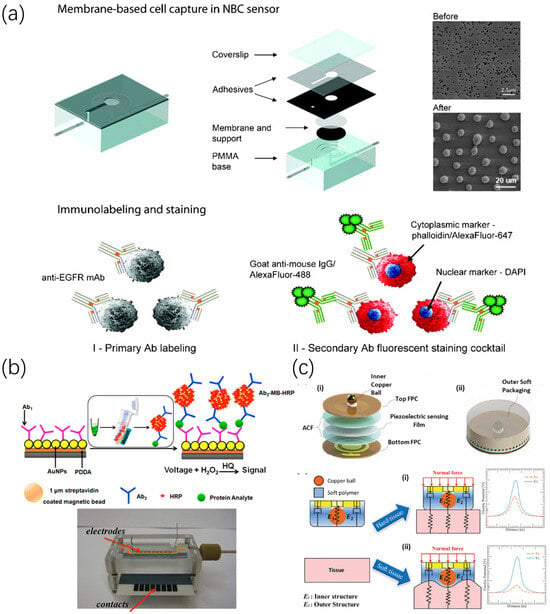
Figure 1
Open AccessReview
Phthalocyanine and Porphyrin Derivatives and Their Hybrid Materials in Optical Sensors Based on the Phenomenon of Surface Plasmon Resonance
by
Tamara Basova
Chemosensors 2024, 12(4), 56; https://doi.org/10.3390/chemosensors12040056 - 06 Apr 2024
Abstract
In this review, the state of research over the past fifteen years in the field of the applications of metal phthalocyanines and porphyrin derivatives as well as their hybrid materials with carbon nanotubes, metal oxides, and polymers in optical sensors based on the
[...] Read more.
In this review, the state of research over the past fifteen years in the field of the applications of metal phthalocyanines and porphyrin derivatives as well as their hybrid materials with carbon nanotubes, metal oxides, and polymers in optical sensors based on the phenomenon of surface plasmon resonance (SPR) is analyzed. The first chapter of the review presents an analysis of works on the use of porphyrins and phthalocyanines in classical SPR sensors for the detection of gases and volatile organic vapors, as well as their improved modifications, such as total internal reflection ellipsometry (TIRE) and magneto-optical SPR (MOSPR) methods, while the second chapter is devoted to their application for the detection of various analytes in solutions. The third chapter of the review summarizes publications describing recent advances in the use of porous materials based on hybrids of carbon nanotubes and oxides with metal phthalocyanines. The fourth chapter describes two-dimensional metal-organic frameworks (MOFs) based on metal porphyrin derivatives as SPR sensitizers.
Full article
(This article belongs to the Special Issue Carbon Nanomaterials and Related Materials for Sensing Applications, Volume II)
►▼
Show Figures
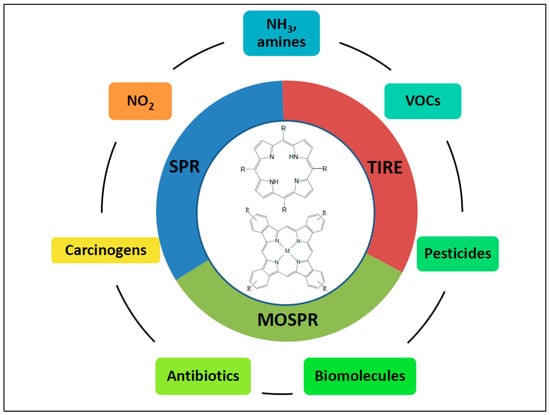
Figure 1
Open AccessReview
A Mini-Review on Metal Oxide Semiconductor Gas Sensors for Carbon Monoxide Detection at Room Temperature
by
Yaoyi He and Mingzhi Jiao
Chemosensors 2024, 12(4), 55; https://doi.org/10.3390/chemosensors12040055 - 06 Apr 2024
Abstract
Carbon monoxide can cause severe harm to humans even at low concentrations. Metal Oxide Semiconductor (MOS) carbon monoxide gas sensors have excellent sensing performance regarding sensitivity, selectivity, response speed, and stability, making them very desirable candidates for carbon monoxide monitoring. However, MOS gas
[...] Read more.
Carbon monoxide can cause severe harm to humans even at low concentrations. Metal Oxide Semiconductor (MOS) carbon monoxide gas sensors have excellent sensing performance regarding sensitivity, selectivity, response speed, and stability, making them very desirable candidates for carbon monoxide monitoring. However, MOS gas sensors generally work at temperatures higher than room temperature, and need a heating source that causes high power consumption. High power consumption is a great problem for long-term portable monitoring devices for point-of-care or wireless sensor nodes for IoT application. Room-temperature MOS carbon monoxide gas sensors can function well without a heater, making them rather suitable for IoT or portable applications. This review first introduces the primary working mechanism of MOS carbon monoxide sensors and then gives a detailed introduction to and analysis of room-temperature MOS carbon monoxide sensing materials, such as ZnO, SnO2, and TiO2. Lastly, several mechanisms for room-temperature carbon monoxide sensors based on MOSs are discussed. The review will be interesting to engineers and researchers working on MOS gas sensors.
Full article
(This article belongs to the Special Issue Chemical Sensors for Volatile Organic Compound Detection, 2nd Edition)
►▼
Show Figures
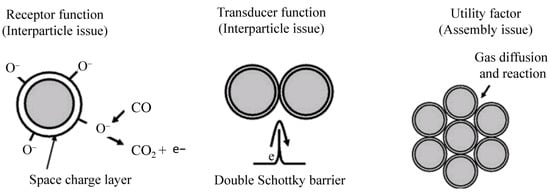
Figure 1
Open AccessArticle
Enhanced Gas Sensing Performance of CuO-ZnO Composite Nanostructures for Low-Concentration NO2 Detection
by
Hakimeh Pakdel, Matteo Borsi, Massimo Ponzoni and Elisabetta Comini
Chemosensors 2024, 12(4), 54; https://doi.org/10.3390/chemosensors12040054 - 05 Apr 2024
Abstract
The detection of nitrogen dioxide (NO2) is essential for safeguarding human health and addressing environmental sustainability. That is why, in the last decades, gas sensors have been developed to detect NO2 to overcome these hazards. This study explores the use
[...] Read more.
The detection of nitrogen dioxide (NO2) is essential for safeguarding human health and addressing environmental sustainability. That is why, in the last decades, gas sensors have been developed to detect NO2 to overcome these hazards. This study explores the use of a novel CuO-ZnO composite synthesized through a polyol and sol–gel technique to enhance gas sensing performance. The CuO-ZnO composite offers the advantage of a synergic combination of its properties, leading to improved sensitivity, selectivity, and low detection limit. The innovative polyol technique employed in this research enables the controlled synthesis of hierarchical CuO and porous ZnO structures. The composite formation is achieved using the sol–gel method, resulting in CuO-ZnO composites with different ratios. The structural, morphological, and optical properties of the materials have been characterized using FESEM, X-ray diffraction, and UV-vis spectroscopy. Gas sensing experiments demonstrate enhanced performance, particularly in sensitivity and selectivity for NO2, even at low concentrations. The composites also exhibit improved baseline stability compared to pristine CuO and ZnO. This study explains the influence of humidity on gas sensing properties by examining interactions between water molecules and sensor surfaces. Notably, the developed CuO-ZnO composite displays excellent selectivity towards NO2, attributed to favorable bonding characteristics and acid-base properties. Overall, this research contributes to advancing gas sensor technology, providing a promising potential for sensitive and selective NO2 detection, thereby addressing critical needs for human health and environmental protection.
Full article
(This article belongs to the Special Issue 10th Anniversary of Chemosensors—Recent Advances in Chemical Sensing Based on Nanomaterials)
►▼
Show Figures

Figure 1
Open AccessArticle
Potentiometric Phosphate Ion Sensor Based on Electrochemically Modified All-Solid-State Copper Electrode for Phosphate Ions’ Detection in Real Water
by
Yang He, Chenhua Han, Hao Du, Ying Ye and Chunhui Tao
Chemosensors 2024, 12(4), 53; https://doi.org/10.3390/chemosensors12040053 - 01 Apr 2024
Abstract
The importance of phosphates has sparked researchers’ considerable interest in the electrochemical detection of phosphates within aqueous solutions in recent years. In this study, we present a novel all-solid-state phosphate ion-selective electrode (ISE) that integrates copper, copper nanoparticles, and copper phosphate. By modifying
[...] Read more.
The importance of phosphates has sparked researchers’ considerable interest in the electrochemical detection of phosphates within aqueous solutions in recent years. In this study, we present a novel all-solid-state phosphate ion-selective electrode (ISE) that integrates copper, copper nanoparticles, and copper phosphate. By modifying the copper substrate of the electrode with a copper nanoparticle film and creating a lamellar copper phosphate film through electrochemical treatment, we significantly enhanced the electrode’s electron transfer efficiency. This microstructure with large specific surface area markedly improved the electrode’s responsiveness to the targeted ions by accelerating the achievement of chemical equilibrium on the electrode surface, thereby boosting its sensitivity and stability. The newly developed electrode was capable of detecting phosphate ions in solutions with a pH range from 6 to 11 and performed optimally in neutral solutions at pH 7, following Nernst principle, with a detection limit of 1 ×
(This article belongs to the Special Issue Chemical Sensors and Analytical Methods for Environmental Monitoring)
►▼
Show Figures

Graphical abstract
Open AccessArticle
An Enzyme Immunoassay Developed for the Determination of Methylene Blue in Aquatic Products Based on a Novel Hapten
by
Xuanyun Huang, Guangxin Yang, Yunyu Tang and Liqing Wang
Chemosensors 2024, 12(4), 52; https://doi.org/10.3390/chemosensors12040052 - 31 Mar 2024
Abstract
Methylene blue (MB) is a chemical dye which is used as an alternative drug for malachite green. In this study, based on computational chemistry, a novel hapten (TM) of MB was designed by comparing the conformational and electronic properties of MB. TM was
[...] Read more.
Methylene blue (MB) is a chemical dye which is used as an alternative drug for malachite green. In this study, based on computational chemistry, a novel hapten (TM) of MB was designed by comparing the conformational and electronic properties of MB. TM was synthesized and further conjugated with bovine serum albumin (BSA) and Ovalbumin (OVA). Then, the polyclonal antibodies were obtained by immunization with the immunogen of TM-BSA. Under optimal conditions, a sensitive indirect competitive enzyme-linked immunosorbent assay (icELISA) was developed for the determination of MB, with an IC50 value of 41.5 μg L−1 and displaying a cross reaction of 78.2~88.9% with three different MB metabolins. The limit of detection (LOD) and the limit of quantitation (LOQ) for MB were validated to be 4.8 µg/kg and 6.0 µg/kg, respectively. Spiking experiments showed recoveries between 82.3% and 84.3%, with a relative standard deviation (RSD) of ≤6%. The results showed the generated polyclonal antibodies from the new hapten TM were reliable and could be used for detecting MB in fishery productions.
Full article
(This article belongs to the Section Analytical Methods, Instrumentation and Miniaturization)
►▼
Show Figures
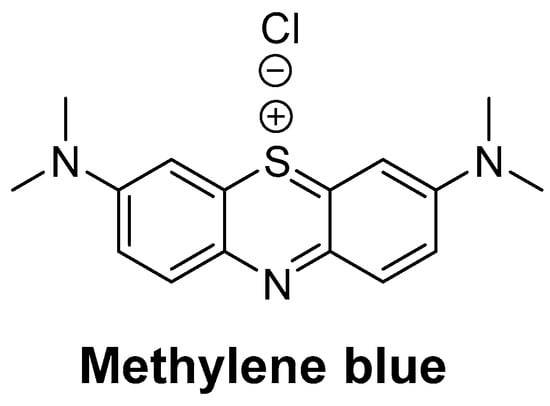
Figure 1
Open AccessCommunication
Improved Microelectrode Array Electrode Design for Heavy Metal Detection
by
Jian Zhang, Shijun Wu, Feng Zhang, Bo Jin and Canjun Yang
Chemosensors 2024, 12(4), 51; https://doi.org/10.3390/chemosensors12040051 - 28 Mar 2024
Abstract
Traditional working electrodes are not sufficient to realize the low detection limit and wide detection range necessary for the detection of heavy metals. In this study, a microelectrode array electrode was proposed using a design scheme based on microelectromechanical systems that was optimized
[...] Read more.
Traditional working electrodes are not sufficient to realize the low detection limit and wide detection range necessary for the detection of heavy metals. In this study, a microelectrode array electrode was proposed using a design scheme based on microelectromechanical systems that was optimized with finite element software. The working electrode adopted an innovative composite structure to realize the integrated design of the working and counter electrodes, which improved the system integration. Performance tests showed that the electrode realized the quantitative analysis of Cd(II), Pb(II), and Cu(II) with a low detection limit (0.1 μg/L) and a wide detection range (0.1–3000 μg/L). The electrode successfully measured the lead and copper ion concentrations in the Sanya River, including both seawater and freshwater environments. The experimental results demonstrate that the electrode exhibits excellent adaptability to environmental conditions and can be potentially applied for technical support in environmental monitoring and sewage treatment.
Full article
(This article belongs to the Special Issue Advances in Electrochemical Sensing and Analysis)
►▼
Show Figures
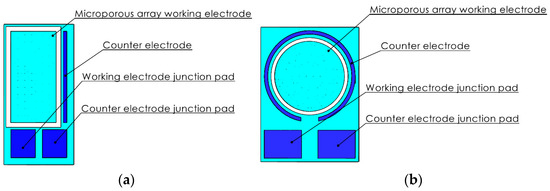
Figure 1
Open AccessArticle
HS-SPME-GC/MS Metabolomic Analysis for the Comparative Evaluation between a Plum–Apricot Hybrid and Its Parents
by
Anna Lante, Dasha Mihaylova, Ivayla Dincheva and Aneta Popova
Chemosensors 2024, 12(4), 50; https://doi.org/10.3390/chemosensors12040050 - 27 Mar 2024
Abstract
The “Stendesto” plumcot is the only successful Bulgarian plum–apricot hybrid having the “Modesto” apricot and the “Stanley” plum as parents. The current study reports on the metabolites and volatile organic compounds (VOCs) discovered in the three fruits. Forty-one metabolites in total, as represented
[...] Read more.
The “Stendesto” plumcot is the only successful Bulgarian plum–apricot hybrid having the “Modesto” apricot and the “Stanley” plum as parents. The current study reports on the metabolites and volatile organic compounds (VOCs) discovered in the three fruits. Forty-one metabolites in total, as represented by amino acids, organic acids, sugar acids and alcohols, phenolic acids, fatty acids, mono- and di-saccharides, and sterols, were identified in the samples. Additionally, sixty-five VOCs were profiled using the gas chromatography/mass spectrometry (GC/MS) analysis and HS-SPME technique. Among these VOCs, alcohols, aldehydes, esters, ketones, lactones, terpenoids, and benzene derivatives were the existing chemical classes. Not all metabolites were present in both apricot and plum, but the hybrid had managed to inherit all of the identified metabolites with the exception of γ-aminobutyric acid. This study is a first on the topic of plumcot fruit evaluation referencing its parental lines. Principal component (PCA) and hierarchical cluster (HCA) analyses further aided in revealing the differences and similarities between the “Stendesto” plum–apricot hybrid and its parents.
Full article
(This article belongs to the Special Issue The Second Edition of GC, MS and GC-MS Analytical Methods: Opportunities and Challenges)
►▼
Show Figures

Figure 1

Journal Menu
► ▼ Journal Menu-
- Chemosensors Home
- Aims & Scope
- Editorial Board
- Reviewer Board
- Topical Advisory Panel
- Instructions for Authors
- Special Issues
- Topics
- Sections & Collections
- Article Processing Charge
- Indexing & Archiving
- Editor’s Choice Articles
- Most Cited & Viewed
- Journal Statistics
- Journal History
- Journal Awards
- Conferences
- Editorial Office
Journal Browser
► ▼ Journal BrowserHighly Accessed Articles
Latest Books
E-Mail Alert
News
Topics

Conferences
Special Issues
Special Issue in
Chemosensors
Application of Carbon Nanotubes in Sensing
Guest Editor: Cristina TortoliniDeadline: 30 April 2024
Special Issue in
Chemosensors
Fluorescent Probe and Biosensing
Guest Editors: Peng Yin, Sheng YangDeadline: 30 May 2024
Special Issue in
Chemosensors
Nanomaterials-Based Sensors
Guest Editors: Simas Rackauskas, Agne SulciuteDeadline: 30 June 2024
Special Issue in
Chemosensors
Preparation and Application of Photoelectrochemical Sensors
Guest Editors: Mei Yan, Jing ZhangDeadline: 20 July 2024
Topical Collections
Topical Collection in
Chemosensors
Women Special Issue in Chemosensors and Analytical Chemistry
Collection Editors: Teresa Corrales, Nicole Jaffrezic-Renault, Eleonora Alfinito
Topical Collection in
Chemosensors
Recent Trend in Chromatography for Pharmaceutical Analysis
Collection Editors: Cláudia Maria Rosa Ribeiro, Maria Elizabeth Tiritan
Topical Collection in
Chemosensors
Optical Chemosensors and Biosensors
Collection Editor: Ambra Giannetti
Topical Collection in
Chemosensors
Sustainable Metal Oxide Materials for Sensing Applications
Collection Editors: Ana Rovisco, Elisabetta Comini


